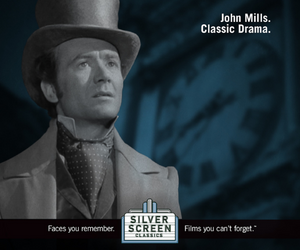TORONTO – It took nearly two years, but Canada’s Competition Bureau has approved the merger of BBM’s and Nielsen Media Research’s Canadian TV measurement systems.
The companies announced their initial deal in July of 2004 and the Competition Bureau finally ruled on June 23rd of this year. "That was quite a process, I must say," BBM president Jim Macleod told Cartt.ca.
"The Bureau conducted a detailed review of the merger, consulting broadcasters, advertisers, and advertising agencies. It found strong industry support for the creation of a standard TAM system in Canada, the norm in the United States, Britain and Australia," says the decision. "The Bureau also concluded that the transaction would likely result in a decrease in the overall cost of TAM services for the majority of purchasers since the merger creates a corporation that will pass on savings to its members. While the basic gathering of TAM data will be consolidated, both BBM and Nielsen remain free to competitively market additional products and services."
While the raw data will be collected and complied by just one entity now, the two companies, and any others who want to come along, will still compete on the software front – the programming that makes sense and analyzes the data. And as of the start date, broadcasters can use either company’s software to analyze their audience data. In the past, the data and software were proprietary. Companies were either BBM or NMR houses.
"On the first of September you can use either BBM software or Nielsen – or whatever else comes into the market," said Macleod. "What we hope is going to happen is that there’ll be a lot of new innovative programs written so people will be able to look at the data in different ways."
Products such as Spotwatch, Media Advisor, CMR, InfoSys, and products offered by third party suppliers will continue to be marketed by each organization. BBM is actually creating a new division dedicated to the development, marketing and sale of its software.
Macleod also added that it’s too simplistic to call the Mark II system simply a push-button meter, given its level of sophistication. Along with the launch the system will be able in incorporate PVR viewing in its data, although how to account for when recorded programming is watched is still an unanswered question.
It will, however, note which parts of a delayed program were watched and what portions were skipped.
"If you watch something delayed, we will put it back to where it was recorded, as long as it was within seven days," said Macleod, explaining that the delayed viewing will be part of the ratings data for that show.
However, media buyers on both sides of the border aren’t sure that’s the way to go. Some feel it’s unfair, especially when it comes to ads about a sale or a contest deadline that may expire before the seven day window is up.
"We have to have the discussion with the buying community," said Macleod. "At the moment, it all just gets reported as viewing because there (aren’t enough PVRs) to matter yet – but when there are enough, do you show the delayed viewing different than from the live viewing? It’s a discussion that we have to have.
"There have been a couple of buyers call to say we should be reporting it separately… but there have been no formal discussions. Most of the advertising is as valid three or four days later than the day it ran," added Macleod.
Buyers and broadcasters believe that this combination will lower the cost of audience measurement overall, cut duplication and confusion when one company’s numbers have in the past often showed something different than the other’s. Savings will be poured into expanding the electronic measurement to other markets such as Ottawa, Edmonton and Winnipeg, where viewers still use diaries.
Right now, Toronto, Vancouver, Calgary, Montreal, Ontario Regional (outside of Toronto) and Quebec Regional (outside of Montreal) are the regions measured. Approximately 3,500 Canadians take part.



